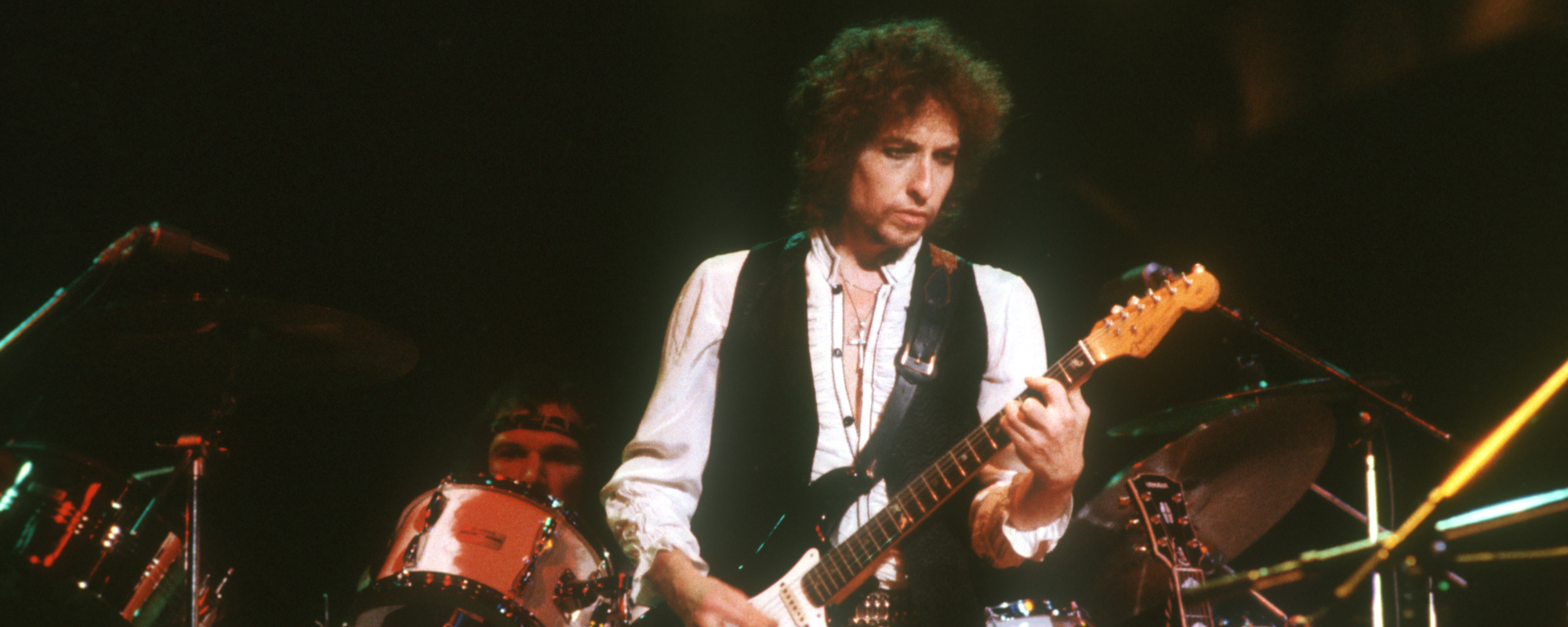Bob Dylan hated the title of his fourth album. It wasn’t his idea, but rather the brainchild of Tom Wilson, the LP’s producer. Dylan felt the title Another Side of Bob Dylan signified a kind of eradication of what he had done in the past, which wasn’t at all what he wanted to project.
Videos by American Songwriter
The songs on the record, however, suggested Dylan was indeed making strides away from his protest-song past. And while he hadn’t yet ventured into electric music territory, his lyrics were moving into another realm: they became messier, more episodic and personal, somehow more human, even for all his poetic talent. Let’s go back in time to 1964 to find out how Bob Dylan created this landmark record.
Inhabiting the Voice of Bob Dylan, Not the Voice of a Generation
After a debut record mostly filled with cover songs, Bob Dylan’s next two albums wowed music fans with the depth and maturity of his writing on songs that often dealt with topics pulled right from current events. He became a leading light of the folk movement, but he was a little bit too restless to stay in any one lane for too long.
The genesis for much of the material on Another Side of Bob Dylan can be found in two trips he took in 1964: a road trip with buddies across the U.S. and then a European tour/vacation. As for the songs that explored love’s ups and downs, Dylan was no doubt influenced by the implosion of his relationship with Suze Rotolo, which also happened in the first half of 1964.
When he returned from Europe, he was brimming with new material. Needless to say, Columbia Records was eager to put out more content from their young star (Dylan was barely 23 when the album was released). On a June night in New York City, Dylan pulled out his acoustic guitar and harmonica (and also used the studio piano) and churned out all 11 songs on the record amidst a sea of hangers-on who had come to witness the session.
Older Then, Younger Now
There’s really only one track on Another Side of Bob Dylan you could call a protest song. And even though “Chimes of Freedom” started to form with some lines Dylan penned after the assassination of President John F. Kennedy in November 1963, the song doesn’t stick to one topic. Instead, it imagines tolling bells in the middle of a surreal storm that call for justice for a wide swath of countless confused, accused, misused, strung-out ones and worse. It was almost as if he was trying to wrap up his protest-singer duties in one fell swoop so he could move on to other matters.
On this record, those other matters tended to be matters of the heart, and he approached this subject from all angles. Album-opener “All I Want to Do” finds him giggling his way through a bashful come-on, while “I Don’t Believe You (She Acts Like We Never Have Met)” also trades in gallows humor to make sense of a girl who’s receding from him right before his very eyes.
In tackling these character sketches and relationship issues, Dylan was writing with much more subtlety than in the broadsides of previous albums. On first listen, “It Ain’t Me Babe” sounds like the narrator admitting his shortcomings as a suitor, until you realize he’s actually suggesting that no reasonable guy could meet the girl’s demands. “To Ramona” comes on like a portrait of a depressed girl, until the narrator admits he’s drawn to her because he recognizes his own struggles in hers.
“Ballad in Plain D” is a somewhat controversial song in the Dylan canon, in that it finds him dispensing with any pretense and writing directly about the final night of his relationship with Rotolo in harrowing fashion. Maybe the final scenes of their parting helped to create a more jaded Dylan, one who shrugged off black-and-white judgments as nothing more than naivete on “My Back Pages.”
The Legacy of Another Side of Bob Dylan
Another Side of Bob Dylan angered many of the folk-music true believers. They felt Dylan was writing about trivialities instead of the issues that mattered most. Little did they know that their hero, influenced by the bold new sounds of The Beatles and the rest of the British Invasion, was about to plug in and blow up any semblance of the earnest folkie he once resembled.
We can now see Another Side of Bob Dylan as a transitional record in his career. Yet this is Dylan after all, which means that even a transitional record contains about five or six stone-cold classics in its lineup. Maybe it was a different “side” to his persona, but Dylan’s musical greatness has always been the most reliable constant in his unpredictable career.
When you purchase through links on our site, we may earn an affiliate commission.
Photo by Michael Ochs Archives/Getty Images












Leave a Reply
Only members can comment. Become a member. Already a member? Log in.